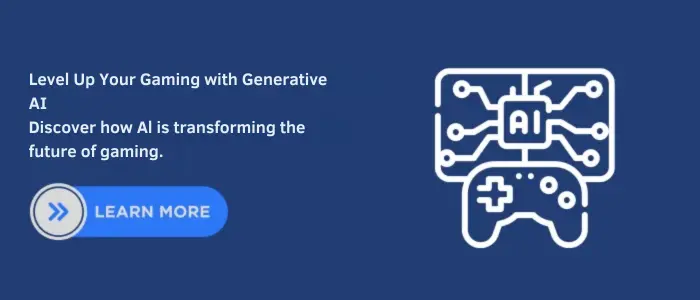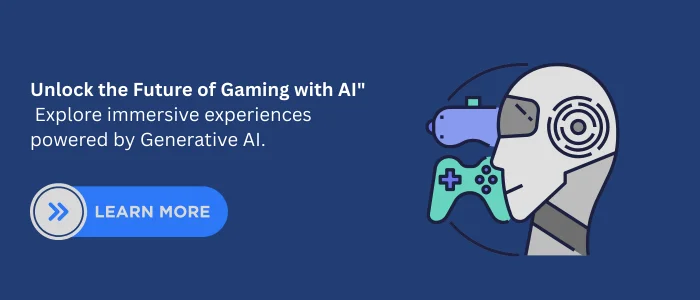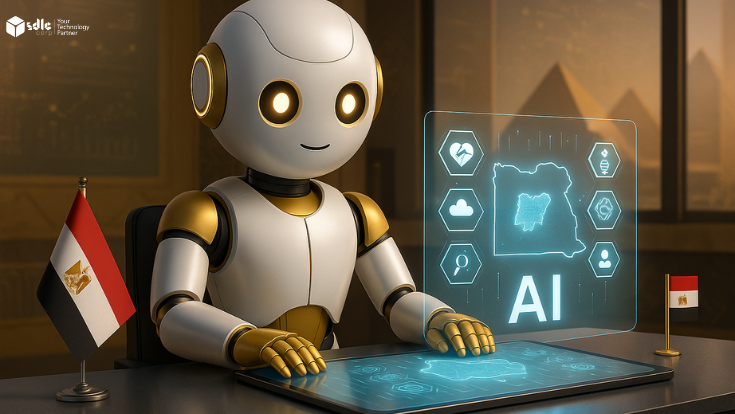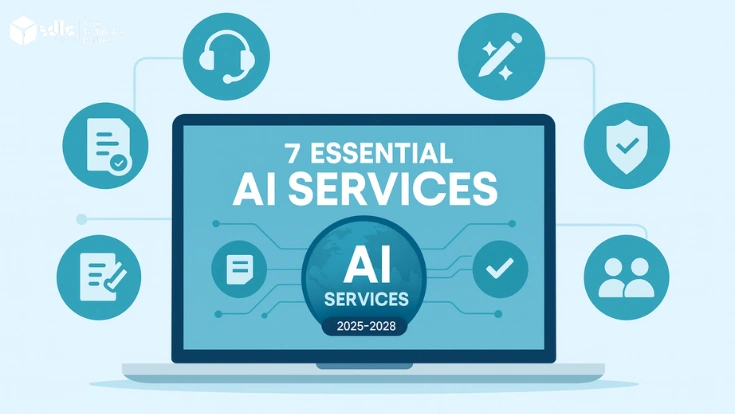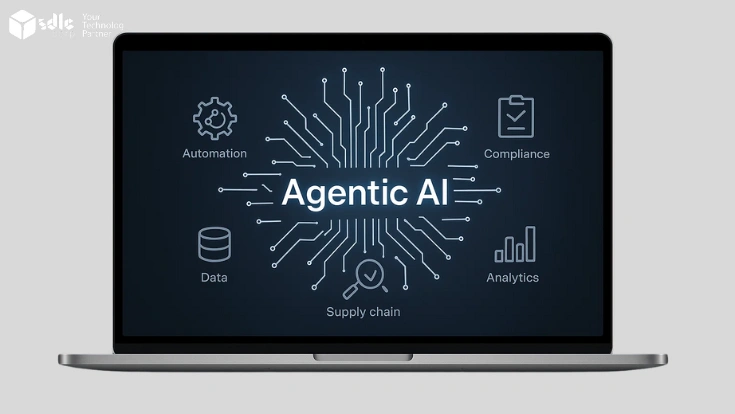Introduction
Generative AI for Gaming is revolutionizing how video games are designed and played. It helps developers create characters, worlds, and stories faster, while also making gameplay more immersive and personalized.
If you’re new to the concept, check out what generative AI is to understand the basics before exploring its role in gaming.
In this blog, we’ll explore why generative AI is essential for gaming, its applications, benefits, and how leading companies use it to gain an advantage.
Use of Generative AI in Game Development
Game development involves large volumes of creative assets, complex logic, and continuous iteration. Generative AI can support these processes by assisting with environment design, dialogue generation, and narrative variation. Many studios begin by exploring Generative AI development services to build models that fit their game engines, pipelines, and content guidelines.
1.Why Gaming Needs Generative AI
The gaming industry is one of the largest entertainment markets worldwide, with billions of players across consoles, PCs, and mobile devices. However, the demand for fresh content, realistic experiences, and engaging stories is higher than ever. Players no longer want just repetitive levels; they expect personalized, evolving, and dynamic experiences.
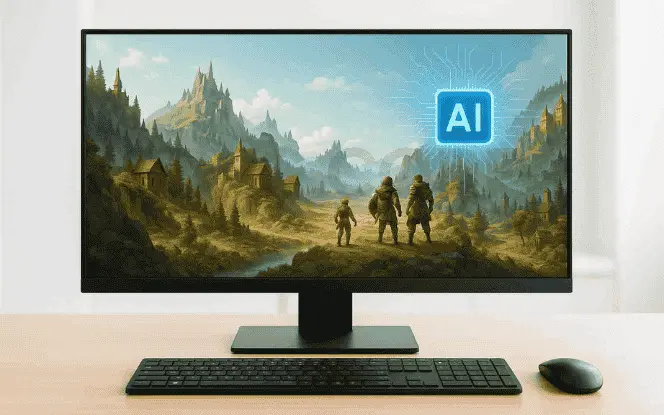
Generative AI helps meet this demand by creating infinite variations of levels, quests, and assets, while also simulating player behavior and adapting gameplay in real time. Consequently, studios can deliver bigger and more immersive games without dramatically increasing production costs. In addition, players get richer, more personal experiences that keep them engaged.
2.Applications of Generative AI in Gaming
Generative AI is revolutionizing the gaming industry by enabling smarter, more dynamic, and personalized experiences. From creating realistic game worlds to powering adaptive characters and storylines, AI is opening endless possibilities for both developers and players.
2.1 Game Design and Development

Generative AI assists developers in creating game assets, levels, and environments. Instead of designing each element manually, developers can set rules, and AI generates entire maps or objects within hours. For example, massive landscapes or futuristic cities can be generated instantly, freeing designers to focus on creativity.
2.2 Character Creation and Animation

AI makes it possible to design lifelike characters with unique traits, facial expressions, and movements. Furthermore, AI can automatically generate animations that adapt to player choices. This means every player interaction can feel more realistic, creating deeper immersion.
2.3 Storytelling and Dialogue
Story-driven games benefit hugely from generative AI. Instead of fixed dialogues, AI creates branching narratives that adapt to player decisions. As a result, characters can respond naturally, making gameplay feel more dynamic and emotionally engaging.
2.4 Personalized Gameplay
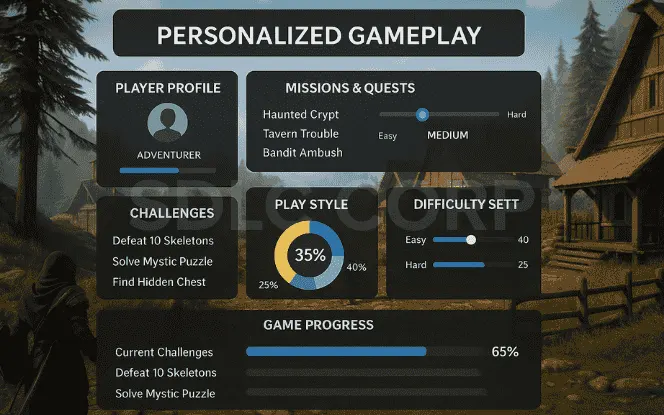
One of the strongest advantages of generative AI is personalization. It analyzes how players interact and adapts difficulty levels, missions, and challenges. For example, casual players may get easier puzzles, while advanced players face harder scenarios. Consequently, each player’s journey feels unique.
2.5 Visuals and Sound Design

Generative AI can also generate dynamic music, sound effects, and visuals. Instead of repeating the same soundtrack, AI can produce adaptive music that changes with in-game events. Similarly, textures and visual effects can be generated for more realistic atmospheres.
3.AI in Multiplayer and Esports
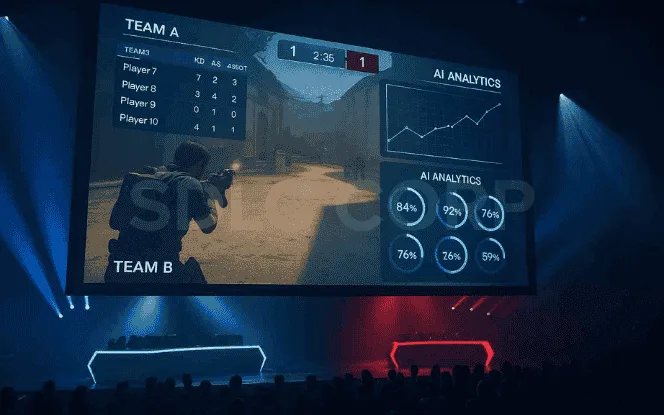
Multiplayer and esports gaming demand balance and fairness. However, maintaining this across millions of matches is difficult. Generative AI can simulate thousands of matches instantly to spot imbalances, overpowered features, or exploitable mechanics. Therefore, developers can fine-tune gameplay before updates, ensuring fairness.
This is part of a broader shift check out our article on the AI in Gaming: The Future of the Industry to see how AI is shaping live gaming ecosystems, streaming, and player engagement.
Moreover, esports teams now use AI to analyze performance, train players, and develop strategies. This allows them to stay competitive and improve player development at scale.
4.Procedural Quests and Dynamic Missions
Procedural generation has always been a part of gaming, but generative AI makes it smarter. AI can design quests, side missions, or challenges based on a player’s progress. As a result, the gameplay never feels repetitive. Players may discover new objectives, enemies, or resources every time they log in, ensuring long-term engagement.
5.VR, AR, and Immersive Experiences
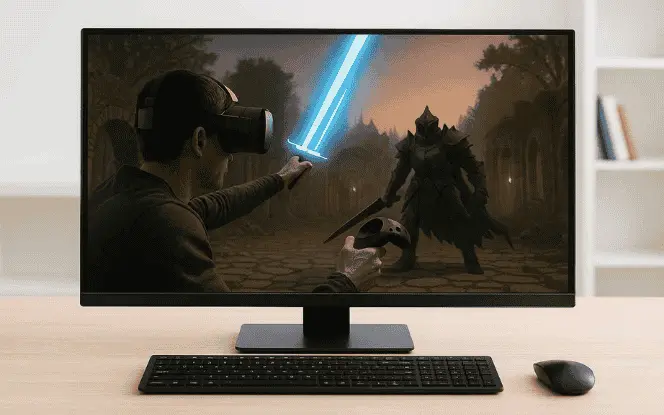
Generative AI is transforming virtual reality (VR) and augmented reality (AR) by bringing games to life with realistic and adaptive environments. Unlike static designs, AI can generate dynamic worlds, interactive objects, and evolving storylines in real time. This creates an immersive experience where every playthrough feels different, keeping players engaged and making VR and AR more lifelike than ever.
Beyond environments, AI also enhances NPC behavior and storytelling. Characters can now respond intelligently to player actions, simulate emotions, and adapt conversations naturally. At the same time, AI-powered narratives adjust instantly based on decisions, creating personalized journeys that feel unique to each gamer. Together, these innovations make VR and AR not just immersive but truly interactive, pushing the boundaries of what gaming can achieve.
6.Benefits of Generative AI in Gaming

Generative AI delivers a wide range of benefits:
- Faster Development: Production cycles shrink as AI automates repetitive tasks.
- Cost Savings: Reduced development time lowers costs while improving output.
- Personalization: Each player enjoys unique gameplay experiences.
- Greater Immersion: Realistic characters, adaptive music, and detailed environments enhance realism.
- Replayability: AI-driven variation ensures players always discover something new.
- Competitive Edge: Studios adopting AI gain a clear market advantage
7.Challenges of Generative AI in Gaming
Despite its potential, generative AI in gaming faces challenges:
- Ethics and Fairness: Ensuring AI does not create harmful or biased content.
- Quality Control: AI-generated assets require human oversight to maintain consistency.
- Regulation: Industry standards and rules must evolve to cover AI-generated content.
- Costs: Advanced AI tools can be expensive, especially for smaller studios.
- Trust: Both players and developers need confidence in AI-created outcomes.
8.Case Studies: How Companies Use Generative AI in Gaming
Generative AI is already being adopted by some of the biggest names in gaming. Leading companies are using it to design smarter worlds, create realistic characters, and improve overall player experiences. By looking at real-world examples, we can see how generative AI is not just theory but a practical tool shaping the future of the gaming industry.
Ubisoft
Ubisoft has adopted AI to create dialogues for non-playable characters (NPCs). This allows characters to respond naturally, reducing repetition and improving immersion.
Electronic Arts (EA)
EA uses AI to predict player behavior and personalize gameplay. It analyzes how players interact with matches in FIFA or Madden, adjusting difficulty for a better experience.
NVIDIA
NVIDIA leverages AI for real-time rendering and realistic graphics. Its DLSS (Deep Learning Super Sampling) improves performance and visual quality without increasing hardware demands.
Epic Games
Epic integrates AI into Unreal Engine, enabling developers to create massive, realistic worlds with less effort. This helps indie developers as well as AAA studios.
Roblox
Roblox is experimenting with AI to help creators design game assets and scripts faster, lowering the barrier for entry.
Indie Developers
Smaller studios also use AI to save costs and speed up development, allowing them to compete with larger companies.

9. Economic Impact and Workforce Transformation
Generative AI is reshaping the economics of gaming. By reducing design and testing time, it lowers costs and helps companies deliver games faster. Additionally, predictive tools reduce downtime by identifying bugs before release.
Moreover, AI changes workforce roles. Instead of handling repetitive tasks, developers focus on creativity and strategy. Jobs evolve into higher-value roles involving design oversight and storytelling.
The gaming supply chain also benefits. Fewer raw materials and less wasted time in design mean better efficiency. Consequently, both large and small studios save resources while achieving sustainability.
10.Future of Generative AI in Gaming
The future is bright. Generative AI will enable fully adaptive games that respond uniquely to each player. NPCs will become smarter and more realistic, and entire game worlds may evolve differently depending on choices.
Generative AI will also drive innovation in the metaverse, cloud gaming, and AI-powered esports. With AI, developers can build massive, living digital ecosystems that adapt in real time.
11. Content Generation and Player Interaction
Generative models can help create non-player character dialogue, dynamic quests, and adaptive storylines. These systems must balance creativity with consistency, especially in live games. In this context, a Generative AI consulting company may help teams evaluate suitable use cases, set review processes, and define limits for in-game content generation.
Integration with Game Analytics and Systems
Generative AI is often part of a broader AI stack that includes player analytics, matchmaking, and fraud detection. Integrating generative outputs into these systems requires careful coordination. Studios may rely on AI development services to connect generative models with existing data pipelines, game servers, and monitoring tools while maintaining performance and stability.
Conclusion
Generative AI for Gaming is not just a trend it is the future of interactive entertainment. From creating expansive worlds to designing intelligent characters and dynamic storylines, it makes gaming faster, smarter, and more immersive. While challenges exist, the opportunities far outweigh the risks, and studios that adopt AI early will lead the way forward.
If your organization is ready to embrace this change, you can hire generative AI developers to bring innovation, creativity, and scalability into your gaming projects.
FAQ'S
What is generative AI in gaming?
Generative AI in gaming is a type of artificial intelligence that not only analyzes data but also creates new content such as characters, levels, stories, and even entire environments. Unlike traditional methods, it can generate endless variations, making games more dynamic, personalized, and immersive. This means players enjoy fresh experiences without developers manually designing every element.
How does generative AI improve storytelling?
Generative AI enhances storytelling by enabling branching narratives and adaptive dialogues that change depending on player choices. Instead of fixed scripts, AI can generate new plot twists, side quests, or character interactions in real time. As a result, each player’s journey feels unique, making role-playing games (RPGs) and open-world adventures far more engaging.
Can AI personalize games for different players?
Yes, generative AI personalizes gaming experiences by adjusting difficulty levels, missions, and in-game rewards based on how each person plays. For example, if a player prefers exploration, the game may generate more quests related to discovery. If another enjoys combat, AI may increase battle challenges. This ensures every gamer has an experience tailored to their style.
Which companies use generative AI in gaming?
Several leading aerospace organizations are already using generative AI. Airbus uses it for designing lighter aircraft parts that save fuel. Boeing applies AI for predictive maintenance and flight path optimization. NASA relies on it for planning complex space missions and testing new spacecraft materials. SpaceX uses AI-driven simulations to design reusable rockets and improve launch success rates. Beyond these giants, many startups and aerospace suppliers are also adopting generative AI to stay competitive in the global market.
What are the challenges of using AI in gaming?
While powerful, generative AI in gaming also faces challenges. These include ethical concerns, such as ensuring AI doesn’t introduce bias or inappropriate content, and regulatory issues, as governments seek to control how AI is used. In addition, development costs, technical limitations, and the need for quality control can slow adoption. Developers must balance innovation with responsibility.

